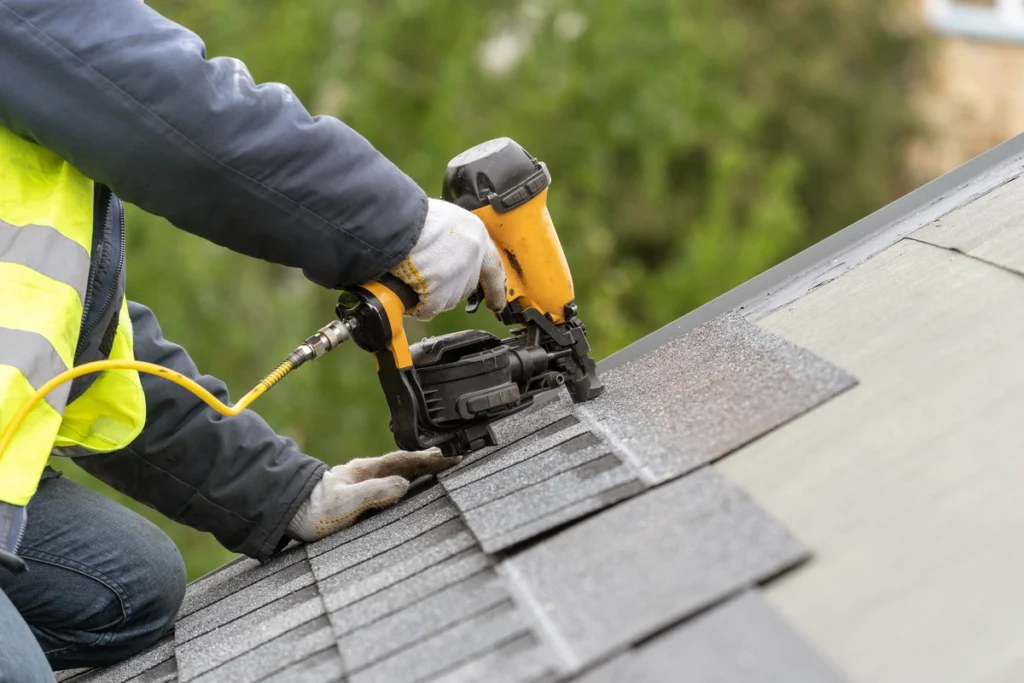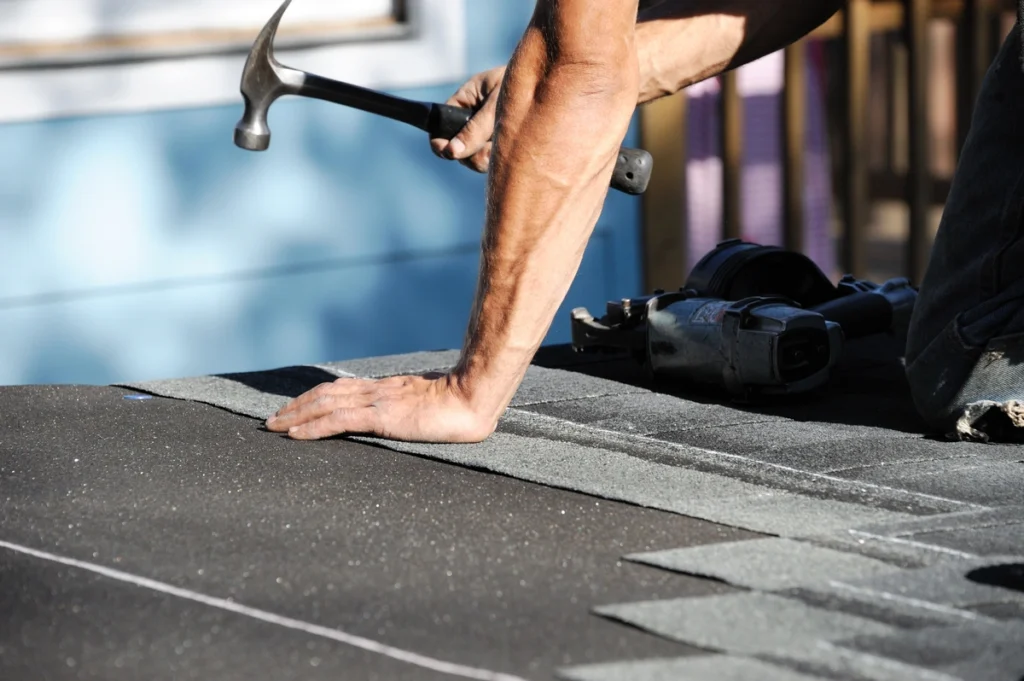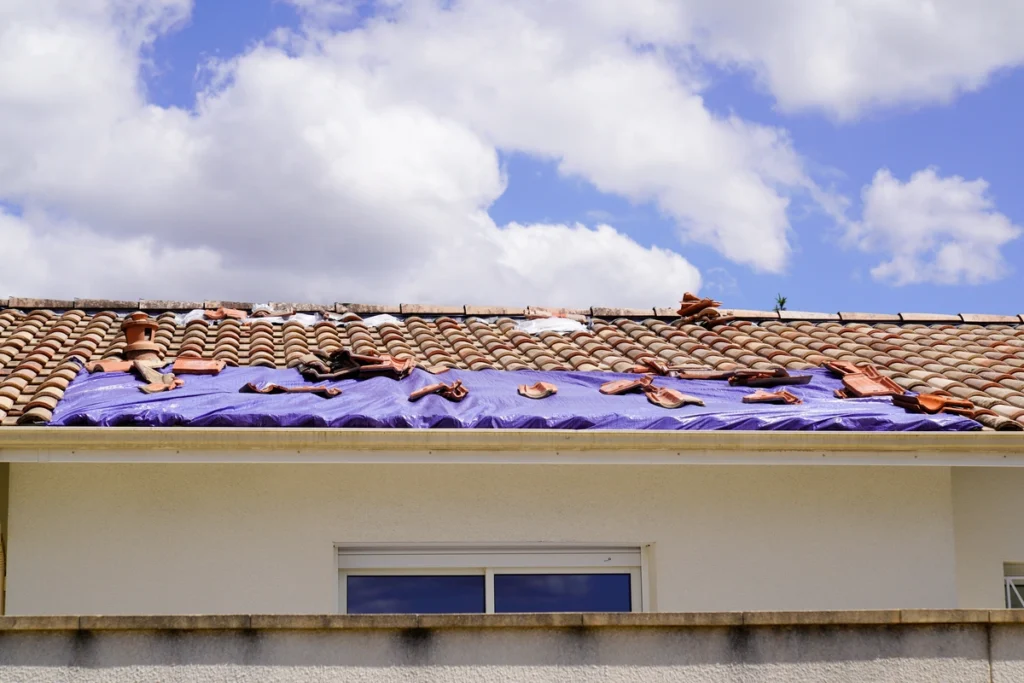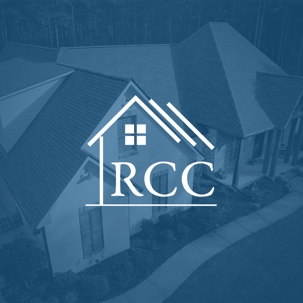Welcome to “Roofing 101: A Beginners Guide To All Things Roofing” — your essential handbook for everything about roofing. Whether you’re a first-time homeowner seeking the basics or you’ve got some experience under your belt but need to brush up on aspects of basic roofing components like materials, installation, and maintenance, we’ve got you covered.
In this comprehensive guide, we delve into the myriad of roofing types and their advantages and disadvantages; break down how to tackle DIY roof installations; shed light on common roofing issues and solutions; and offer useful tips to ensure your home remains safe
underneath its substantial shield—the roof.
So stay tuned as we hammer out valuable insights that extend beyond just covering your head—because understanding roofs can save time, money, even prevent potential catastrophes in the long run.
Key Takeaways

- Understanding the different types of roofing materials, such as asphalt shingles, metal roofs, slate roofing, and wood shakes, is crucial for making an informed decision about what’s best for your home.
- Regular maintenance and prompt repairs are essential for a well – functioning roof that can withstand varying weather conditions and prevent costly damage to your home.
- Hiring professional roofers is recommended for complex roofing tasks to ensure high-quality workmanship, adherence to safety standards, and long-term cost savings. DIY projects should be limited to minor repairs.
- Key steps in roof installation include removing the old roof, inspecting the decking for damage or rot, checking flashing integrity around chimneys and vents, installing drip edge protection, and properly installing the chosen type of shingles.
- Regular inspection and cleaning help maintain the integrity of your roof by catching potential issues early on. Cleaning gutters and addressing common problems like cracked flashing or damaged shingles can prevent leaks and extend the lifespan of your roof.
Understanding Roofing Basics
In this section, we will explore the different types of roofing materials and highlight the importance of maintaining a well-functioning roof.
Different Types Of Roofing Materials
Delving into the world of roofing can feel overwhelming given the multitude of materials available. Yet, understanding these various options is essential to make an informed decision about what’s best for your home.
Asphalt shingles, for example, are a popular choice across American households due to their cost-effectiveness and ease of installation.
On the other hand, metal roofs, made from materials like steel or aluminum, have gained fame for their high resistance to elements such as fire and snow – making them ideal in places prone to wildfires or heavy snowfall.
There are also traditional wood shakes which offer a unique rustic look but require regular maintenance against mold and rot. Alternatively clay tiles add Mediterranean charm while providing excellent fire resistance too.
Importance Of A Well-maintained Roof
The necessity of having a well-maintained roof lies in its crucial role as the first line of defense against varying weather conditions – roof damage from high winds, scorching heat, heavy rain or snow.
Different roofing materials like an asphalt roof, shingles, metal roofs or slate roofing can all offer substantial protection with proper care and maintenance. A neglected roof system not only jeopardizes your house’s structural integrity but can also lead to expensive repairs due to water damage or ice damage.
Moreover, an efficient and durable roof goes beyond mere protection.
Professional roofers emphasize that regular inspection is key in maintaining roofs’ highest resistance along with prompt repair of any issues from leaks to damaged shingles.
Also noteworthy is adherence to local building codes when installing roofs ensuring installation procedures meet safety standards.
Remember that as you take care of this uppermost layer of insulation shielding your abode—just like a knight’s armor–you are adding years not only to its lifespan but also preserving the value of one of most homeowners’ biggest investments—their homes.
Roofing Installation Tips
When it comes to roofing installation, homeowners are faced with the decision of hiring a professional or taking on the project themselves. This section will outline the steps involved in roof installation and provide valuable tips for a successful DIY roofing business project.
Whether you choose to hire a professional or take on the task yourself, understanding these installation tips is crucial for a durable and long-lasting roof.
Hiring A Professional Vs. DIY

Opting to hire a professional roofer or embark on a DIY project is often the predicament many homeowners face when their roof demands attention. Each route has its own advantages and drawbacks, depending largely on the complexity of your roofing problem.
An enthusiastic homeowner with moderate handyman skills might find it tempting to tackle minor repairs like replacing broken shingles or fixing small leaks themselves.
On the flip side, hiring professional roofers can alleviate these concerns entirely. They possess specialized expertise in various roofing materials and techniques and are well-versed in local building codes—ensuring that the job gets done right the first time around.
While this comes with an upfront cost, long-term savings are inherent as future damage caused by poor installation or improper repairs is significantly curtailed.
In essence, taking into consideration factors like precision needed, potential hazards involved and ultimately your peace of mind – hiring professionals seems like an ideal choice against most types of roofing tasks.
Steps Involved In Roof Installation
Roof installation may seem like a daunting task, but with the right approach, it can be done efficiently and effectively. The first step in roof replacement is to remove the old roof, ensuring that all debris is properly cleared.
Once the old roof is removed, it’s important to inspect the roof decking. This involves checking for any damage or rot that needs to be repaired before moving forward. Checking the flashing around chimneys, vents, and other areas where water could potentially enter is also crucial.
Another important step in roof installation is installing the drip edge. This metal strip goes along the edges of your roof and helps direct water away from the fascia boards and into gutters.
After completing these necessary steps, it’s time to install the shingles on your roof. There are various types of shingles available including asphalt shingles, slate roofing tiles, or even metal roofs depending on your preference and budget.
By following these essential steps during roof installation – removing the old roof, inspecting the decking, checking flashing integrity, installing drip edge protection,and finally installing the shingles – you’ll have a solid foundation for a durable and well-protected roof that will withstand harsh weather conditions while enhancing curb appeal.
Roofing Maintenance And Repair
Regular inspection and cleaning of your roof is crucial to ensure its longevity and optimal performance.
Regular Inspection And Cleaning
Regular inspection and cleaning are crucial for maintaining the integrity of your roof. By performing routine inspections several times a year, you can catch any potential issues early on and prevent costly repairs down the line.
Regular cleaning is also essential to keep your roof in optimal condition. This includes clearing away leaves, branches, and other debris that can accumulate over time.
By staying proactive with regular inspections and cleaning, you can extend the lifespan of your roof and avoid major problems. Hiring a professional roofing contractor for thorough inspections is highly recommended as they have the expertise to identify hidden issues that may not be apparent to an untrained eye.
Identifying Common Roofing Issues
One of the most important aspects of roof maintenance is being able to identify common roofing issues. Cracked flashing, broken shingles, and structural damages to tiles or slate are some of the most common causes of roof leaks.
Improper roof ventilation, faulty roofing materials, ice and water damage, and incorrect roof flashing are among the other prevalent problems that homeowners may encounter. For example, poor installation can lead to leaky roofs while ponding water can cause significant damage over time.
Additionally, blow-offs due to high winds and hail damage can compromise the integrity of a roof. It is crucial for homeowners to regularly inspect their roofs for these issues in order to prevent further damage and costly repairs down the line.
Repairing Leaks And Damaged Shingles

Roof leaks can be a common problem for homeowners, often caused by damaged shingles or small issues like a hole in the flashing. The good news is that fixing these leaks doesn’t always require professional help.
The first step in repairing a leak is identifying its source and determining the cause. This might involve inspecting your attic for any signs of water damage or following water stains on your ceiling to track down the exact location of the leak.
If you notice missing, cracked, or curled shingles on the metal roof, these will need to be replaced. Start by gently lifting up the damaged shingle and removing any nails holding it in place.
For smaller holes or tears in your roofing material, using roofing cement or sealant can provide an effective temporary fix.
Remember that regular maintenance plays a crucial role in preventing leaks and extending the lifespan of your roof. Inspect your roof regularly for any signs of damage or wear-and-tear, such as loose or damaged shingles.
Taking care of minor repairs yourself not only saves money but also gives homeowners peace of mind knowing they’re actively maintaining their roofs’ integrity while preventing further damage inside their homes from leaking roofs
Conclusion
In conclusion, “Roofing 101: A Beginners Guide To All Things Roofing” is a must-read resource for homeowners looking to understand the ins and outs of the roofing industry.
By highlighting the importance of a well-maintained roof and discussing common issues that homeowners may face, this guide empowers readers to make informed decisions about their roofs.
Whether you’re considering hiring professional roofers or tackling small repairs on your own, this guide has got you covered.
If you want a professional to repair your roof, contact Rankin County Custom. They offer free and same-day evaluations, 24/7 emergency services, and are GAF Master Elite.

